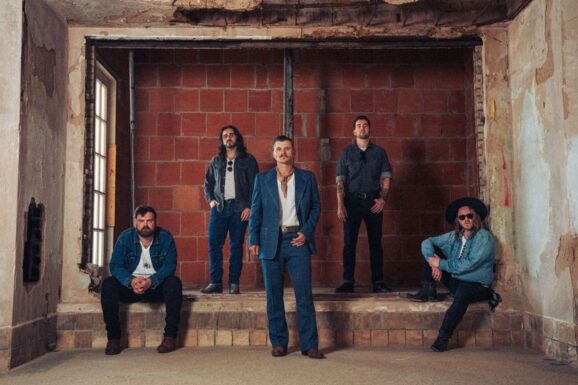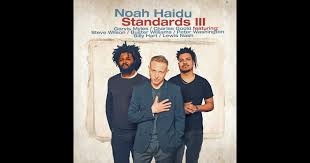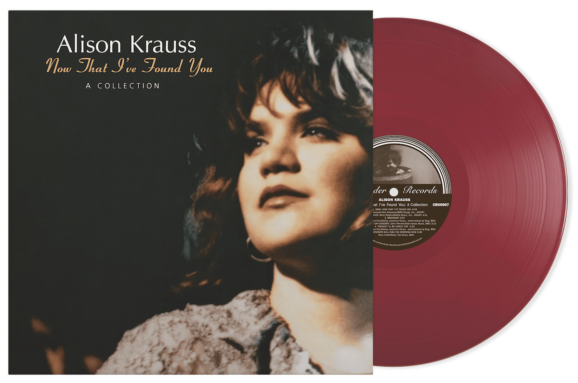The Electric Blues outfit GA-20, made up of Matt Stubbs, Pat Faherty, and Tim Carman, will be releasing their third LP on September 9th, 2022, via Colemine Records. Crackdown is a direct follow-up to the original songs on their debut album Lonely Soul, which took some time to release due to the disruption in touring. In the meantime, GA-20 launched into a very interesting project with 2021’s Try It…You Might Like It! GA-20 Does Hound Dog Taylor, where they covered only Hound Dog Taylor songs as part of a 50th anniversary team up with Alligator Records, who released Taylor’s later work.
GA-20 might well be called Blues revivalists due to their close study of the Blues of the 1950s and 1960s, and they brought all that knowledge to bear on their energetic Hound Dog collection. With the original songs on Crackdown, you’ll also hear them taking very clear Blues constructs and bringing in elements that make for compelling inclusions from Garage Rock and Country music. So far the singles “Easy on the Eyes” and “Dry Run” give a good preview of those elements, respectively, while still making a pretty clear statement of GA-20’s Blues identity. I spoke with Matt Stubbs about both their new album Crackdown and their 2021 Hound Dog Taylor release, their approach to recording, and their enduring interest in the storytelling and lyrical aspects of Blues alongside instrumentation.
Hannah Means-Shannon: I know that you all previously released one full LP of original songs, but you’ve also released a live EP, and then you released an album of Hound Dog Taylor songs in 2021. Where does working on the new album, Crackdown, fit in that timeline?
Matt Stubbs: Yes, this will be the third LP, but was actually recorded before the Hound Dog record. It was the follow-up LP to our first collection, Lonely Soul. When everything got shut down, we put it on the shelf during the pandemic, because we wanted to make sure that we could tour behind it. Then, during the pandemic, we recorded the Hound Dog record. So Crackdown is a follow-up to Lonely Soul.
HMS: I was really impressed that you did a whole album of Hound Dog Taylor songs and I was wondering how you came to make that decision. It would be much more common to do covers of a bunch of Blues songs, for instance, by different people.
MS: We’ve always had comparisons to Hound Dog Taylor for a couple of reasons. One of them is that we kind of based the whole band, from the beginning, on 50s and 60s Chicago Blues. The other element is that our instrumentation is two guitars and drums, with no bass, which was actually fairly common in Chicago Blues, and Hound Dog Taylor has the same instrumentation of two guitars and drums. The way this record came about was that during the pandemic, we spoke to the owner of Alligator Records, who had seen the band come through Chicago before everything shut down.
Bruce [Iglauer] actually started Alligator Records, and the first record that he put out was a Hound Dog Taylor record, and he actually started the label to help Hound Dog Taylor out. It became a full record label after that. In July 2020, we were talking to him, and he was interested in doing something with us, but we are already signed to Colemine Records, who we are very happy with. But 2021 was actually the 50th anniversary of Alligator Records, so I cooked up the idea of doing a 50th anniversary record of all Hound Dog Taylor songs, and having both labels put it out, so it was like a co-release. Both labels went for it, and the timing was right, so I ended building a studio at my house. We took a couple of months to work up the material and rehearse and then we recorded it in two days. It was a fun thing to do and by the time the record came out, touring started to open up a bit.
HMS: That a wonderful story and it’s great that you got the labels to work together. A good idea is a good idea.
Matt: Lots of labels are starting to work together on stuff, but that was the first time Alligator has ever done it. It was a good experience.
HMS: What was your approach to recording the Hound Dog music? Was it to be as close as possible, or to bring in your own interpretation?
Matt: It was not to be a copycat, because Pat, our singer, has his own voice and it’s always going to sound like him. But we wanted to capture the spirit of his records, which is really raw and live-sounding. We took steps to do that. We didn’t do many takes. We recorded all live in one room, with no overdubs. Sonically, I produced both of these records, so we bought a bunch of cheap, old Japanese guitars, since Hound Dog used those, and we tried to find one that sounded in the ballpark. We also did some research and used similar amps. Bruce had been at those sessions with Hound Dog, so I asked him questions. I think it still sounds like us, but it’s in the ballpark of Hound Dog.
HMS: Is that stuff you would or plan to play live also?
Matt: We hadn’t played it live up until that point. We put all those songs together for the record. But since then, we mix it up, and probably play three or four of the songs live now. They go over well. People seem to dig them.
HMS: Are you glad that you wrote and recorded Crackdown during a less disrupted time?
Matt: I think it worked out. When it happened, we were touring quite a bit, and were excited to put it out. But actually this Hound Dog record opened a lot of doors for us, and that would never have happened if we hadn’t held off releasing Crackdown. We actually have recorded two other records since Crackdown that will be coming out eventually, so we’re just in release mode now, and touring as much as possible.
HMS: If you think back to the time when you were writing and recording Crackdown, were there particular goals in mind or directions you wanted to try?
Matt: We went back to the same studio, and worked with same engineer on Crackdown as Lonely Soul. We wanted to move forward from that, since we don’t want to make the same album twice, and we were listening to a lot of Country music, Soul, and Garage Rock. Crackdown has a few other elements, or different edges of Blues music slipping in. Lonely Soul was pretty raw Chicago Blues from the late 50s, early 60s, whereas Crackdown has more early 60s sounds. “Dry Run” is obviously bluesy, but it also sounds like a Country song to me. I think, songwriting-wise, we grew a lot since Lonely Soul.
HMS: I could hear those elements in the new songs and I could also see the confidence you felt in bringing those in. I’m glad you didn’t feel that you had to take a purist line.
Matt: I’ve said this before, but traditional Blues is in kind of a weird spot. We’re seeing a lot of revivals in traditional Country music, and Soul music has been having a revival for some time. Colemine has been putting out these throwback Soul, classic-sounding records. There are people doing traditional Blues, and a handful of younger people are doing it, but I don’t hear a lot of up-and-coming bands making Blues in a traditional style. There’s more Blues Rock.
So one of our goals was to do that and we want to reach younger audiences with that. I don’t want to be a total dinosaur, only making music that sounds like it was recorded in the 50s, but the way that we record it and Produce it and the instruments we use try to bring those Blues to a wider audience. Some audiences, when they hear “Blues”, might think of Eric Clapton or Joe Bonamassa, and not Earl Hooker, or the people I think of when I hear the word “Blues”. I think a lot more people would like it if they were exposed to more of the original stuff.
HMS: It’s a great route for discovery, which is what I was thinking with the Hound Dog record, too.
Matt: I hope so. I also play guitar with Charlie Musselwhite, and I’ve played with him for years on festivals, and most of what I see is heavy Blues Rock. I think the Blues that we listen to is more song-based, focusing on a story and a feeling.
HMS: I actually wanted to bring that up, that with the new album particularly, I see a strong sense of story in each of the songs, even when it’s not exactly narrative. It can be more situational or mood-based. So it’s not just the instrumentation that you’re most interested in. “Easy on the Eyes” has a fairly straight forward drama suggested.
Matt: Totally. We put that together a while ago when we were on tour. I kind of had that riff already in my head, and after a crazy gig, we went back to a recording studio of a friend of mine. It was super late at night. Usually Pat writes the lyrics, and I just had the line “easy on the eyes”. We jammed all night and Pat came up with that. We finished it up later on.
HMS: Does Pat tend to write lyrics that he wants to sing, in the sense that the sound of the words is important to him in the vocal lines?
Matt: Yes. He’s very particular about the phrasing of the words, or the syllables, much more than me. I’ll arrange things, or come up with the melody, or changes, but he’s very focused on the flow of the words as well as the story.
HMS: Actually, in “Easy on the Eyes”, there are some substantial vocals that are wordless, too. That speaks without words.
Matt: Yes, he comes in with that in the intro.
HMS: I feel like that song made for a great single because it seems to stand in kind of the middle of the other songs in terms of sound.
Matt: We were trying to figure out which songs to release as singles, and was leaning towards “Fair Weather Friend”, which is more of a Rock ‘n Roll, Garage Rock song, which is less like what we are known for. But we decided that “Easy on the Eyes” was the best because it’s one of the bluesiest songs on the album while still keeping the sound of the album. Especially following a Hound Dog record, we didn’t want to go totally Rock ‘n Roll. “Fair Weather Friend” is a bit of an outlier in that way. With “Dry Run”, it’s still bluesy, but it also takes a Country influence very clearly.
HMS: I noticed that the sequencing on the album might also have some particular meaning for you all, since it opens with “Fair Weather Friend” and closes with two songs that are more or less about saying goodbye or ending something. Was that an arc?
Matt: That was intentional. That last song, “Fair Weather Friend (Final Goodbye)” was an idea because we had nine songs already, but we could take that song that opens the album, which is loud and fast, and do a stripped down, kind of sad version of the same song. It’s just an acoustic guitar and Pat. That was recorded in a different session because we felt like we needed a little bit more at the end of the record.
HMS: Do you have any thoughts about where these new songs will work best in a live set?
Matt: I’m not sure. When I’m writing a record, I try to think about it as a record. But a live set, for me anyway, needs to take other things into consideration when you write up a setlist. I take into consideration the venue, whether it’s a festival or a nightclub, and how long the set is. Some nights you’re only playing 40 minutes, some nights you’re playing 90. Between that, and incorporating some of those Hound Dog songs, then some from Lonely Soul, I never really reference the sequence of the album during the live show. It’s more conditional on the gig.
HMS: One of the songs, I notice, “Crackdown”, is instrumental and really shows off a lot of what interests you guys. Do you do instrumental pieces like that in your live show?
Matt: If we’re playing a longer set, we usually try to include an instrumental. Our first record had an instrumental. I love instrumental music. Before GA-20, I put out a few instrumental records under my own name. I love, not just with guitar, but lots of instrumentals from the 1940s and 1950s. We play “Crackdown” quite a bit live.









One Response
Hi Matt,
Been a long road–so glad you and Pat hit the jackpot. I always admired your gifts every Wednesday night, and now you’re riddin’m to the top. Congrats–so happy for you, Pat and the third skin man.
Sharkbite Mike